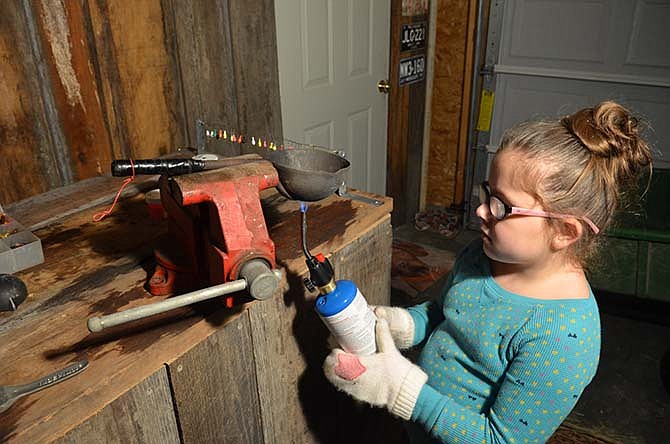Homemade crappie jigs are simple to make.
All you need is lead, hooks, a mold, a cast iron spoon, a torch, a vise and clippers. There isn't much to the process, and making your own lures adds another dimension to the sport of fishing.
When I was a kid, my grandfather's basement workshop was my favorite place on earth. He was always tinkering on this or that, but on the best days he was working on fishing equipment. As a product of the Great Depression, grandpa wasn't one to waste money on anything, including fishing gear. He made his own crappie jigs, and taught me how along the way.
You need lead to make lead head jigs. In the old days, you could readily find lead at service stations for free. It's harder today, but some old-school stations may still have some. Otherwise, you'll have to buy it. Lead shot can be used, but it's pretty pricey. Looking on eBay or Craigslist is another great way to find lead.
The only other piece of the jig you need to buy is hooks. Be sure you by the offset jig hooks. Don't buy straight shaft hooks thinking they'll work, because you must have the 90 degree bend.
Molds make jig making simple, but you'll want a number of sizes. Again, these are readily available used. If you can't find any used molds, a quick internet search will provide a number of retailers who sell them. Purchase molds that make the size jigs you want. For crappie, I primarily make 1/8 oz., 1/16 oz., and 1/32 oz. heads.
The process is easy. Install the correct hooks in the mold and close it. Remember to squeeze tight when you pick it up so the hooks don't shift. Secure the cast iron spoon handle in a bench vise and put some lead in the spoon. Heat the spoon with a torch until the lead melts. Make sure you are wearing gloves when you take the spoon from the vise. Spilling molten lead on yourself would be a horrible experience.
Squeeze the mold handles tight with one hand, while pouring lead into the mold with the other. You only need to let it set up for a few seconds, then open the mold to remove the jigs. The tops of the jigs will have quite a bit of excess lead. Just use shears to trim it off. Be sure to save it as you can melt it down again.
Once you have your jig heads, you can complete the jigs with a rubber tail. Twister tails, curly tails and shad are really common body variations. You can get more involve though and tie tails just like you would flies if you would rather fish with marabou or hair jigs.
It's hard to explain how much I enjoy making jigs with my daughters using grandpa's tools. Passing on traditions from one generation to the next is what makes this outdoor lifestyle so meaningful. I feel like the old man is there with me, smoking his pipe and cracking a half smile each time drop a few more jig head in the tackle tray.
See you down the trail ...
III
Brandon Butler is an outdoors columnist for the News Tribune. Contact him at [email protected].

